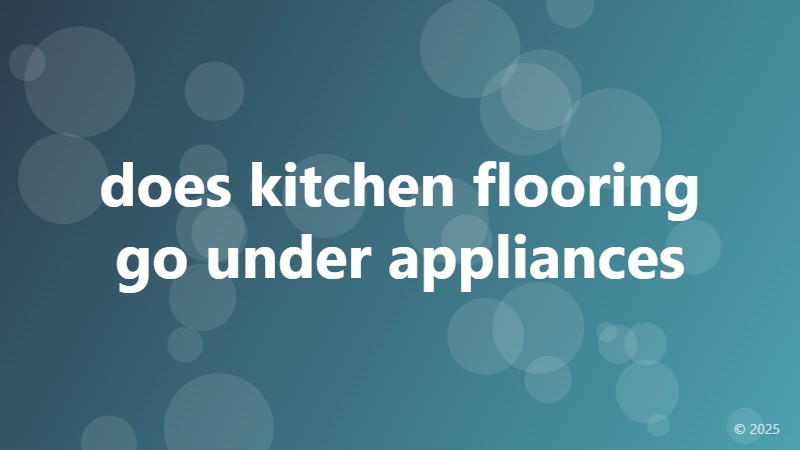does kitchen flooring go under appliances

Understanding Kitchen Flooring Installation: Does It Go Under Appliances?
When it comes to kitchen flooring installation, one common question that homeowners often ask is whether the flooring should go under appliances or not. The answer to this question can have a significant impact on the overall functionality, aesthetics, and durability of your kitchen. In this article, we'll delve into the details of kitchen flooring installation and provide you with a comprehensive guide on whether kitchen flooring should go under appliances or not.
Why Kitchen Flooring Should Go Under Appliances
There are several reasons why it's recommended to install kitchen flooring under appliances. Firstly, it provides a uniform and seamless look, which can enhance the overall appearance of your kitchen. When the flooring goes under appliances, it creates a sense of continuity and flow, making the space look more spacious and organized. Additionally, installing flooring under appliances helps to reduce the risk of water damage and moisture accumulation, which can be a common issue in kitchens.
Another important reason to install flooring under appliances is to ensure easy cleaning and maintenance. When the flooring goes under appliances, it's easier to clean and sweep the floor, reducing the risk of dust and dirt accumulation. This can be particularly important in commercial kitchens or busy households where cleanliness is paramount.
When to Avoid Installing Flooring Under Appliances
While installing flooring under appliances is generally recommended, there are certain situations where it might not be the best option. For instance, if you have appliances that are fixed to the floor or walls, such as a built-in oven or cooktop, it might be more practical to install the flooring around them. This can help to avoid damaging the appliances or the flooring during installation.
Another scenario where installing flooring under appliances might not be ideal is when you have a uneven or sloping floor. In such cases, it's better to install the flooring around the appliances to ensure a level and stable surface.
Tips for Installing Flooring Under Appliances
If you've decided to install flooring under appliances, here are some tips to keep in mind:
Measure carefully: Take precise measurements of your appliances and the flooring to ensure a seamless fit. This can help to avoid gaps and unevenness.
Choose the right flooring: Select a flooring material that's durable and resistant to moisture, such as ceramic tiles or hardwood. Avoid using flooring materials that are prone to water damage or warping.
Plan for appliance movement: Consider the movement and placement of your appliances when installing the flooring. Leave enough space for appliances to be moved in and out, and plan for any necessary adjustments.
In conclusion, installing kitchen flooring under appliances can have several benefits, including a seamless look, easy maintenance, and reduced risk of water damage. However, it's essential to consider the type of appliances, flooring material, and floor layout before making a decision. By following these tips and guidelines, you can create a beautiful and functional kitchen that meets your needs and preferences.